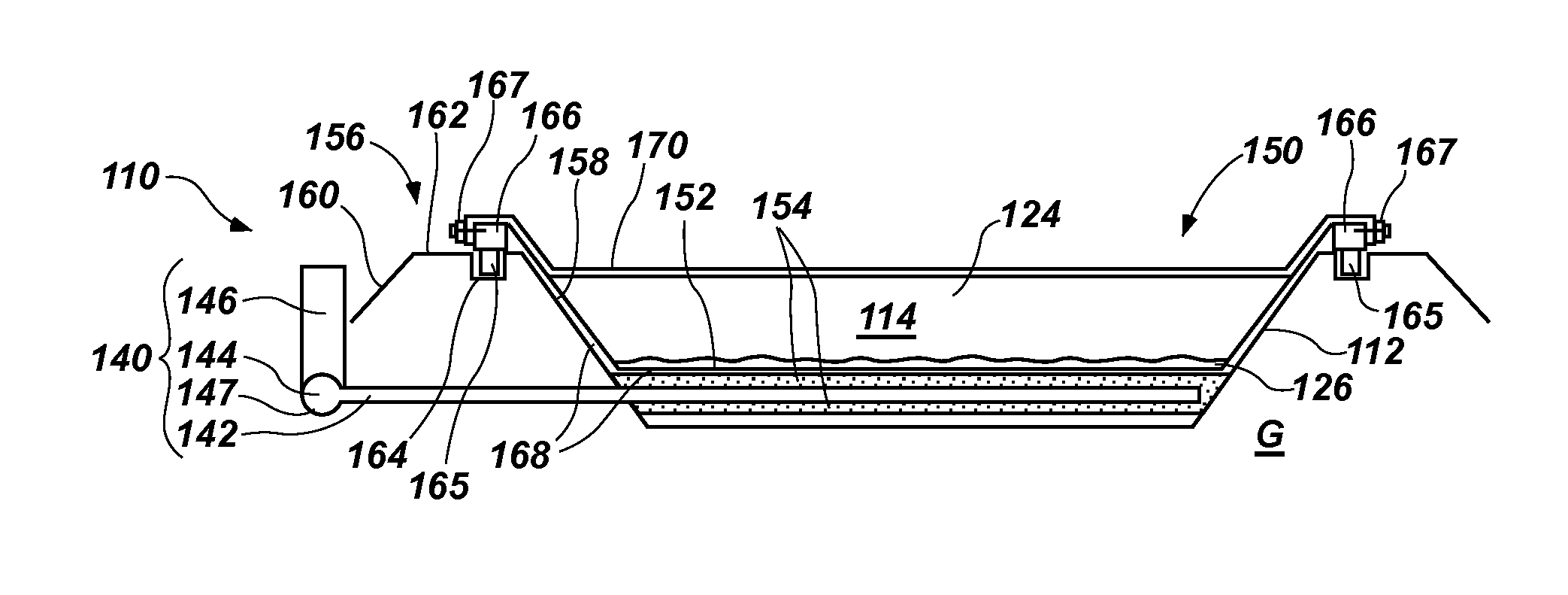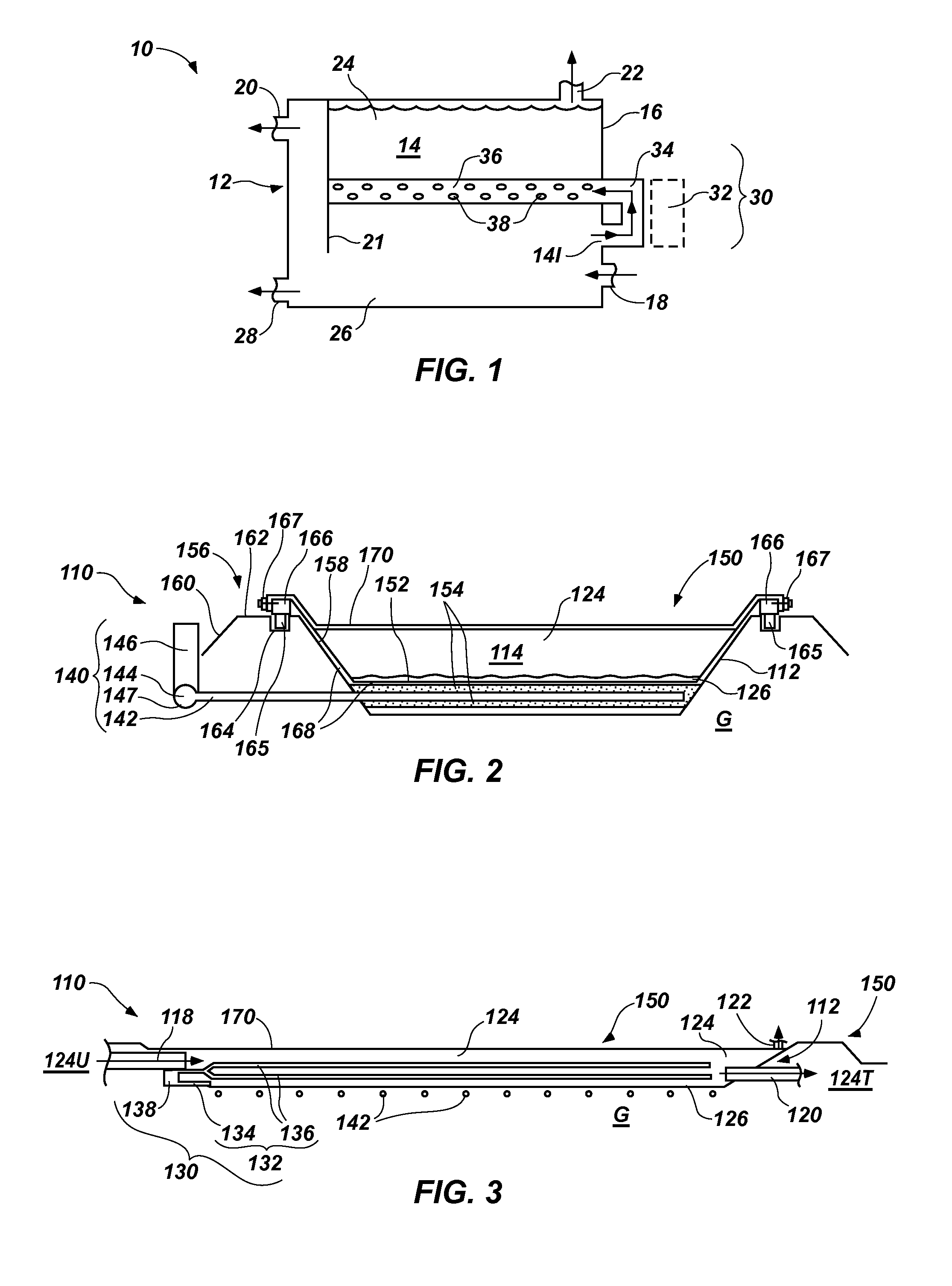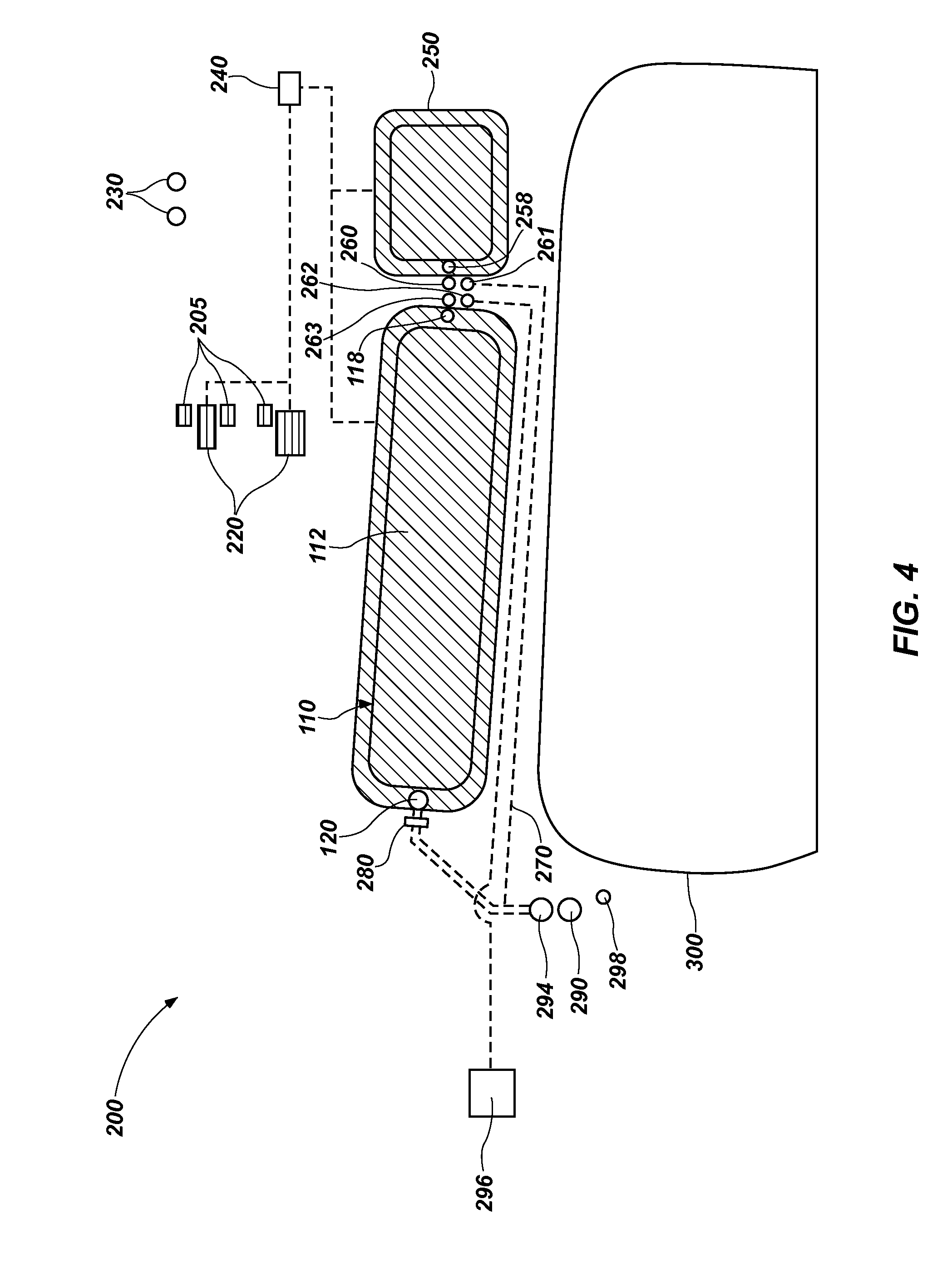Methods for treating wastewater from exploration for and production of oil and gas
a technology for oil and gas exploration and production, applied in biological water/sewage treatment, waste based fuel, waste water treatment from quaries, etc., can solve the problems of less desirable placement of e&p wastewater that includes dissolved haps into evaporation ponds, less desirable disposal methods, and more expensive disposal methods, so as to achieve the effect of safe removal
- Summary
- Abstract
- Description
- Claims
- Application Information
AI Technical Summary
Benefits of technology
Problems solved by technology
Method used
Image
Examples
Embodiment Construction
[0025]According to one aspect of this disclosure, a properly configured bioreactor may be configured to remove VOCs dissolved in wastewater from the wastewater, such as E&P wastewater. In various embodiments, a bioreactor may include an anaerobic vessel for the wastewater, as well as anaerobic microorganisms (e.g., anaerobic bacteria) that will metabolize the organic compounds in wastewater, including, but not limited to, VOCs. In some embodiments, the bioreactor may also include a mixing system for distributing the anaerobic microorganisms throughout the wastewater within the anaerobic vessel. A bioreactor may also include an outlet, from which gases that are produced by the anaerobic microorganisms as they metabolize dissolved VOCs may be collected.
[0026]As shown in FIG. 1, a bioreactor 10 may include a selectively sealed tank 12, which is also referred to hereinafter as a “tank” for the sake of simplicity. The tank 12 includes an interior 14 and an exterior 16, as well as an inle...
PUM
| Property | Measurement | Unit |
|---|---|---|
| hydraulic conductivity | aaaaa | aaaaa |
| width | aaaaa | aaaaa |
| width | aaaaa | aaaaa |
Abstract
Description
Claims
Application Information
 Login to View More
Login to View More - R&D
- Intellectual Property
- Life Sciences
- Materials
- Tech Scout
- Unparalleled Data Quality
- Higher Quality Content
- 60% Fewer Hallucinations
Browse by: Latest US Patents, China's latest patents, Technical Efficacy Thesaurus, Application Domain, Technology Topic, Popular Technical Reports.
© 2025 PatSnap. All rights reserved.Legal|Privacy policy|Modern Slavery Act Transparency Statement|Sitemap|About US| Contact US: help@patsnap.com



